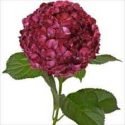Your landscape is always in a state of transition. The five-gallon red maple you planted twenty years ago becomes the shade producer for your entire yard. The once sunny, hot yard has become a shady paradise with landscape changes in the plants that will survive and flourish. Shady spots become a haven for an old time favorite with large, colorful flowers. Known as your grandmother’s favorite, hydrangeas will fill a shady spot with mounds of color.
There are five varieties of hydrangeas that are easily available. Each has a unique quality in either the flower or the leaf form. First are the smooth hydrangeas (hydrangea arborescens) like the Annabelle. Annabelle is a white mop head with slightly floppy stems and flowers one foot across. Many of the other old time mop heads have smaller flowers and weaker stems. Newly developed varieties like Wesser Falls, Chestatee, and Bella Anna have deeper pink flowers with stronger stems.
Hydrangea Paniculata or panicled hydrangeas produce flowers that are in a cone shape up to one and one half feet long. The flowers start off white then age to pink. Commonly referred to as PeeGee hydrangeas these varieties may range from three feet to ten feet tall.
Oakleaf hydrangea (H. Quercifolia) has unique leaf forms and long clusters of white flowers that will age to pinkish purple. The leaves have good fall color turning bronze to crimson. There are compact varieties such as Munchkin and Ruby Slippers that will stay to three feet tall. The leaves are as amazing as the flowers.
Mountain hydrangeas (H. Serrata) originated in the mountainous areas on the islands in Japan. The flowers on mountain hydrangeas are unique and delicate. The plant is smaller along with the flowers and leaves. The flowers are referred to as lace caps and look as though the interior blooms are not matured yet. The mountain hydrangea is more cold hardy with a shorter blooming time .
Big leaf or garden hydrangeas (H. macrophylla, H.hortensia, H.opuloides, H.otsksa) are also from Japan. The plants are symmetrical, rounded, and grow four to eight feet tall. The flowers are mop heads and lace caps in a variety of colors. These varieties bloom on old wood so plan a spot that will not get so cold that the plant dies back to the ground. Protect in colder weather by mounding soil, leaves, or compost over the base of the plant. In the spring the mounded materials will need to be removed to protect the plant from crown rot. These varieties you would prune after they bloom. One of the more sought after varieties in Endless Summer; it will bloom again during the year.
Propagation of hydrangeas is easy. Your cuttings should be obtained from the ends of the non-flowering shoots. The stem should have two or three pairs of leaves. Root your cuttings in
sand in the shade. When roots develop move the cuttings to well-drained soil with organic material added. The best time of year for cuttings is from April to August.
Hydrangeas bloom best in partial shade from hot afternoon sun. Just as your grandmother’s were, hydrangeas will be the focal point in your garden and may be dried for year- round enjoyment indoors. This old time favorite will become your favorite too.
Julie Silva is a University of California Cooperative Extension Master Gardener of Tuolumne County.
UCCE Master Gardeners of Tuolumne County can answer home gardening questions. Call 209-533-5912 or go to: http://ucanr.edu/survey/survey.cfm?surveynumber=7269 to fill out our easy-to-use problem questionnaire. Check out our website at: http://cecentralsierra.ucanr.edu/Master_Gardeners/ You can also find us on Facebook, or pick up the local Master Gardener book “Sharing the Knowledge: Gardening in the Mother Lode” at Mountain Books or the UCCE Office both in Sonora, CA.


